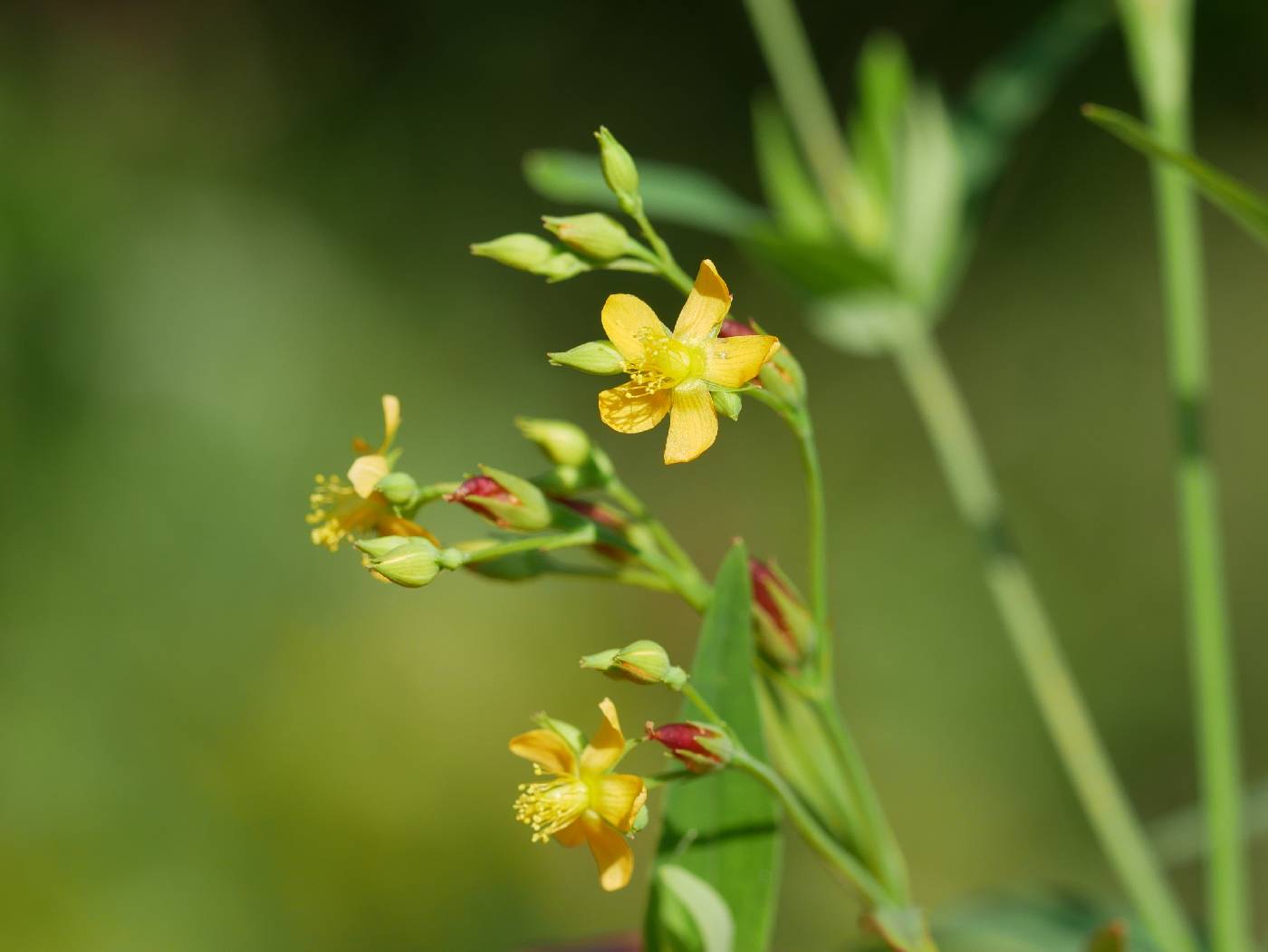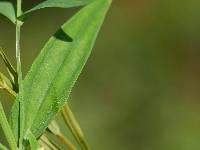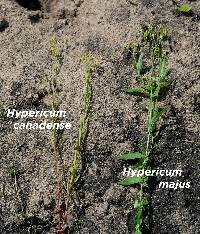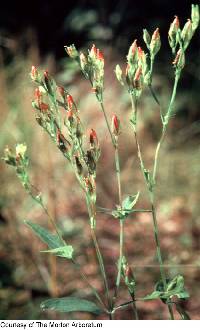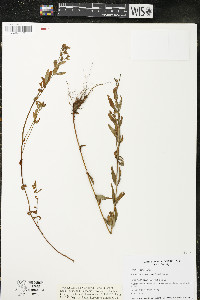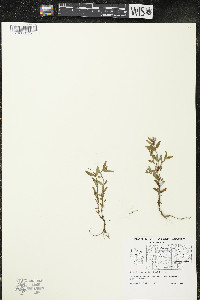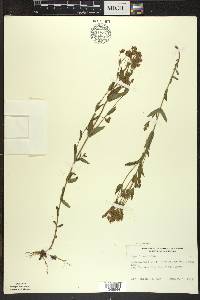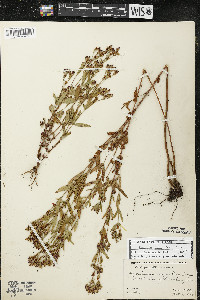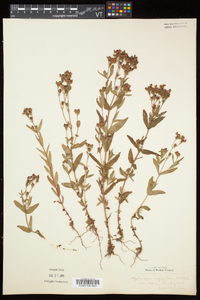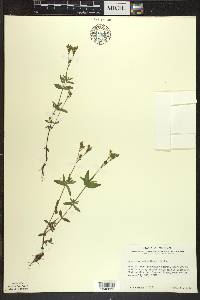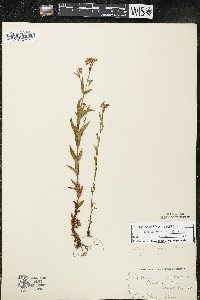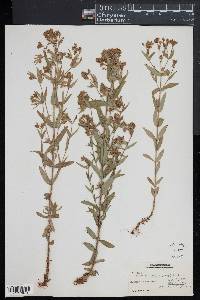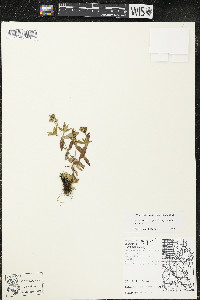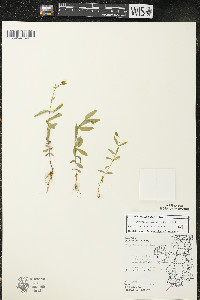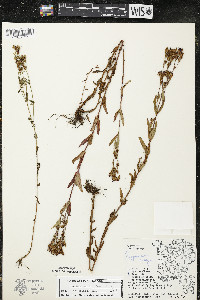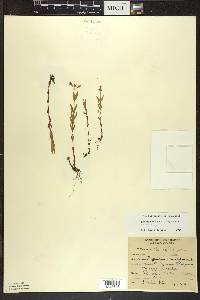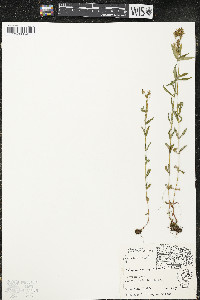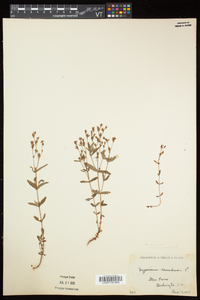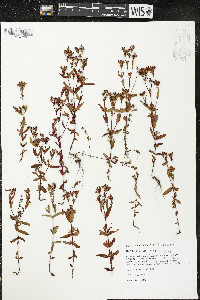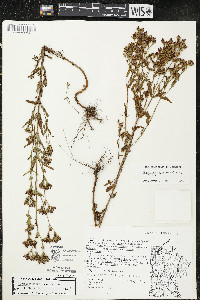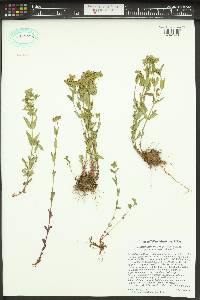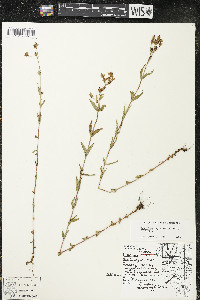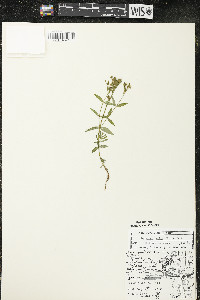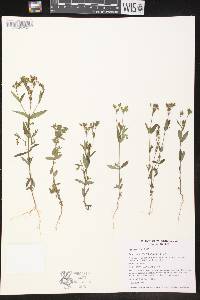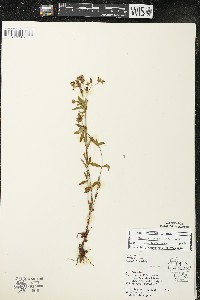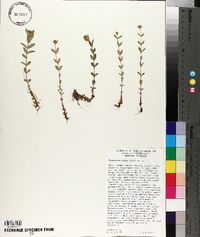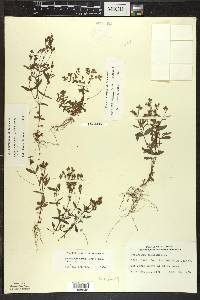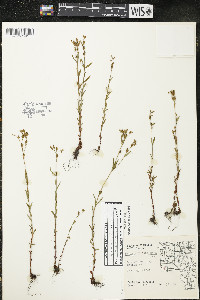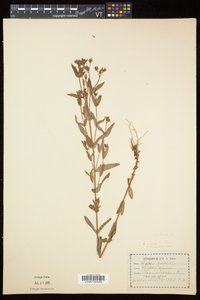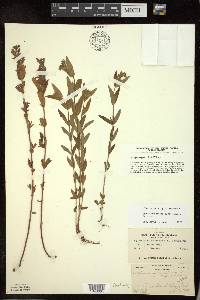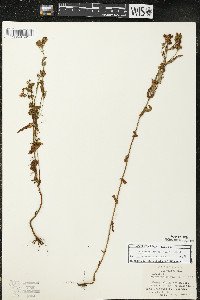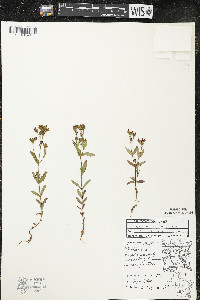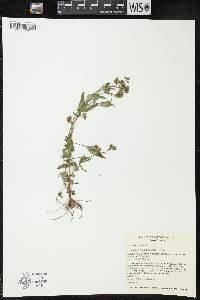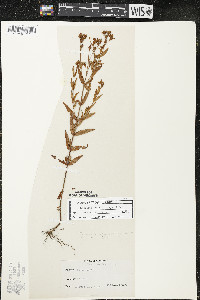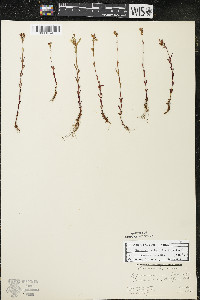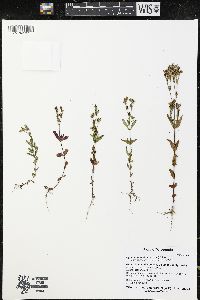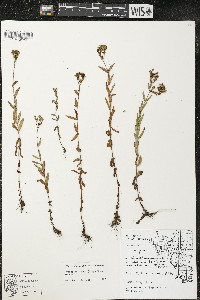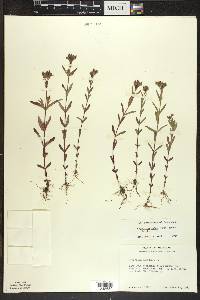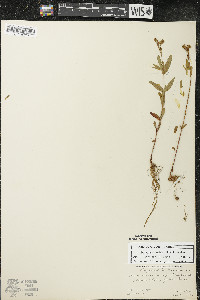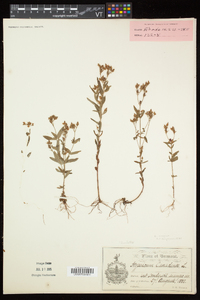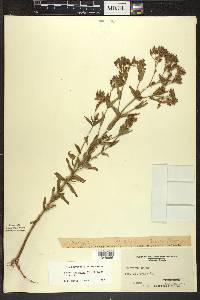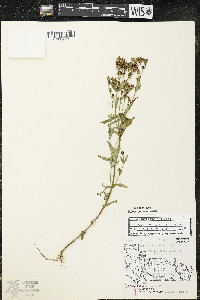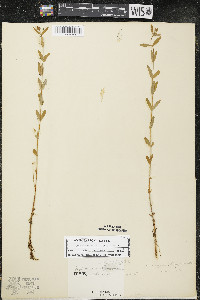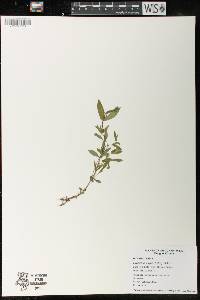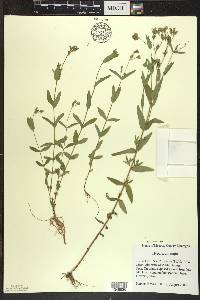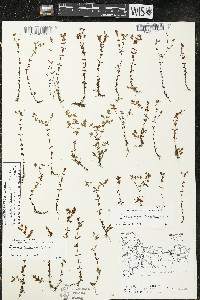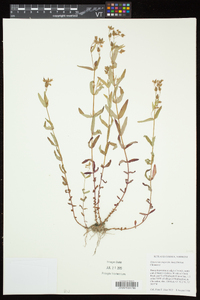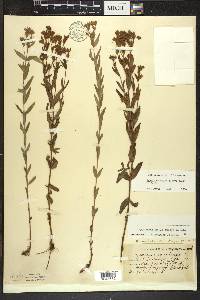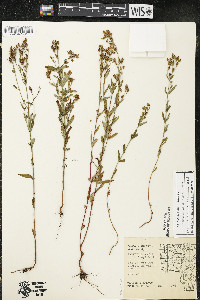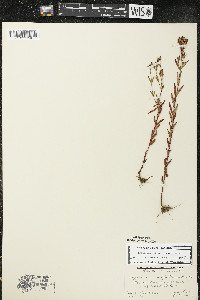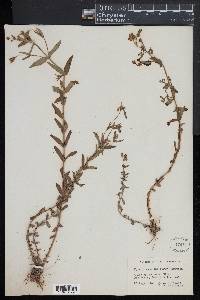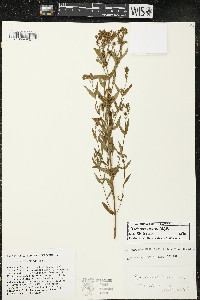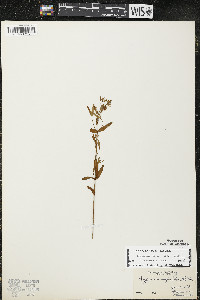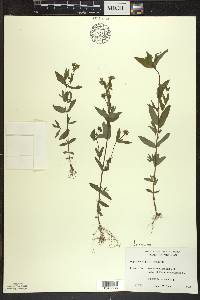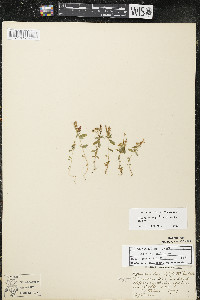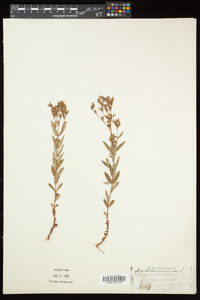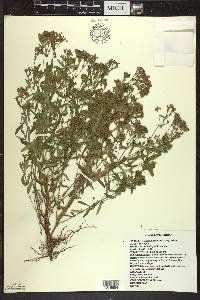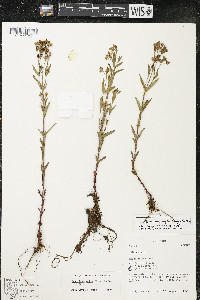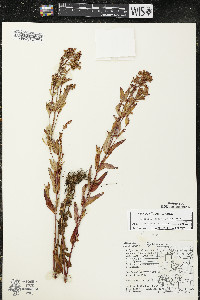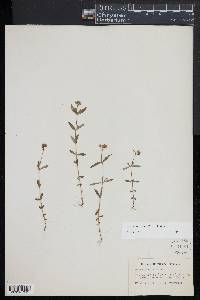Hypericum majus
|
|
|
|
Family: Hypericaceae
Greater Canadian St. John's-Wort, more...large St. Johnswort
|
Perennial herb 10 - 40 cm tall Stem: slender and upright. Leaves: opposite, 2 - 4 cm long, 3 - 9 mm wide, lance-shaped to narrow oblong or narrow elliptic with a blunt to rounded base, non-toothed, five- to seven-veined, slightly clasping around stem, angled upward. Flowers: borne in terminal clusters, with 4.5 - 6.5 mm long sepals that are lance-shaped and widest well below the middle with a short pointed tip, five yellow petals 3.5 - 4 mm long, fourteen to 21 stamens, and three styles reaching 1 mm long. Fruit: a one-chambered capsule, maroon, 5 - 7 mm long, egg-shaped to conical, narrow-tipped, containing many 0.5 - 0.7 mm long seeds. Similar species: Hypericum boreale, Hypericum canadense, Hypericum gentianoides, Hypericum gymnanthum, Hypericum majus, and Hypericum multilum have fewer than 25 stamens per flower. Hypericum boreale can grow as an aquatic or in wet soils. It reaches 10 - 40 cm tall, has stalkless oblong to oval leaves that are less than 2 cm long, and the flowers have leaf-like bracts, 2.5 - 3 mm long petals and eight to fifteen stamens. Hypericum canadense differs because it is 10 cm - 0.6 m tall, the linear to lance-shaped leaves are more than three times as long as wide and single-veined or lightly three-veined, and the flowers have awl-shaped bracts, sepals less than 4.5 mm long, petals 2.5 - 3 mm long, and twelve to 22 stamens. Hypericum gentianoides has green wiry stems that are highly branched, minute scale-like leaves that are pressed against the stems, tiny yellow flowers with five petals and five to ten stamens, and capsules two to three times the length of the sepals. Hypericum gymnanthum is distinguished because the stems are usually unbranched, the leaves are triangular lance-shaped or triangular egg-shaped and rarely more than three times as long as wide, the flowers have awl-shaped bracts and lance-shaped sepals beneath the 3 - 3.5 mm long petals and ten to fourteen stamens, and the capsules are lance-shaped to narrow conical and 3 - 5 mm long. Hypericum multilum differs by its stems that are highly branched near the top, leaves that are rarely more than three times as long as wide, flowers having 1 - 4 mm long awl-shaped bracts and linear-oblong sepals beneath the 1.5 - 2.5 mm long petals and five to sixteen stamens, and capsules that are rounded at the tip and 2 - 3.5 mm long. Flowering: late June to mid September Habitat and ecology: This species is the commonest of the small annual Hypericum species found in the Chicago Region. It grows in calcareous moist sand, like along borders of ponds and in marshes with low water levels. It is also found in marsh borders, interdunal swales, somewhat dry prairie, and floating peat mats. Occurence in the Chicago region: native Etymology: Hypericum is the Greek name for St. John's Wort, which blooms around St. John's Day (June 24). Majus means larger. Author: The Morton Arboretum Much like no. 25 [Hypericum canadense L.], but more distinctly perennial from a rhizome, and avg taller and with more compact infl; lvs commonly ascending, mostly lanceolate to narrowly oblong or narrowly elliptic, 2-4 cm נ3-9 mm, 5-7-nerved, broadly obtuse or rounded at the weakly clasping base, the basal margins of a pair of lvs meeting around the stem; sep lanceolate, acute, 4.5-6.5 mm; pet 3.5-4 mm; stamens 14-21; styles 3(4), to 1 mm; fr maroon, ellipsoid-conic, 5-7 mm; seeds 0.5-0.7 mm; 2n=16. Wet meadows and shores; Nf. and Que. to B.C., s. to N.J., O., Ill., Kans., and Colo. July-Sept. Depauperate plants may approach no. 25. Gleason, Henry A. & Cronquist, Arthur J. 1991. Manual of vascular plants of northeastern United States and adjacent Canada. lxxv + 910 pp. ©The New York Botanical Garden. All rights reserved. Used by permission. From Flora of Indiana (1940) by Charles C. Deam In moist, sandy soil about lakes and swamps and in wet prairies. Rare. ...... Indiana Coefficient of Conservatism: C = 6 Wetland Indicator Status: FACW |

